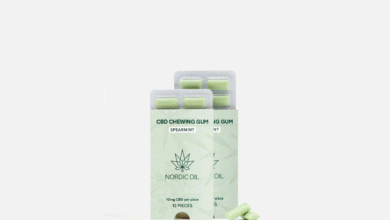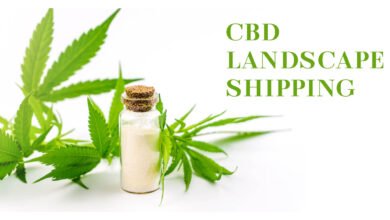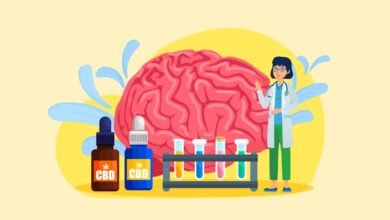CBD for Chronic Pain: How It Works and What to Expect
This in-depth guide explores the mechanisms, benefits, side effects, and realistic expectations associated with using CBD for chronic pain, backed by current research and expert insights.

In recent years, the conversation surrounding natural remedies for chronic pain has taken a dramatic turn, and one compound sits at the heart of that discussion: cannabidiol, more commonly known as CBD. With countless anecdotal reports, emerging scientific studies, and an increasing number of people seeking alternatives to opioid medications, interest in CBD for chronic pain has surged. But how does it work, and what can users genuinely expect from using CBD as part of their pain management strategy?
This in-depth guide explores the mechanisms, benefits, side effects, and realistic expectations associated with using CBD for chronic pain, backed by current research and expert insights.
What is CBD?
CBD (cannabidiol) is one of over 100 chemical compounds known as cannabinoids found in the cannabis plant. Unlike THC (tetrahydrocannabinol), which is responsible for the psychoactive effects or the “high” associated with marijuana, CBD is non-psychoactive. This makes it an attractive option for individuals looking for relief without the mind-altering effects of cannabis.
The Science Behind CBD and Pain Relief
Understanding how CBD for chronic pain works requires some knowledge of the human endocannabinoid system (ECS). The ECS is a complex cell-signaling system that plays a critical role in regulating a variety of physiological processes, including pain perception, immune response, mood, and sleep.
CBD interacts indirectly with the ECS by influencing cannabinoid receptors (primarily CB1 and CB2 receptors), which are found throughout the body, particularly in the brain and immune system. By modulating these receptors, CBD can help reduce inflammation, dampen pain signals, and promote homeostasis.
Key Mechanisms:
- Anti-Inflammatory Effects: CBD has been shown to reduce inflammation by inhibiting certain enzymes and signaling pathways, making it beneficial for inflammatory conditions such as arthritis.
- Pain Signal Modulation: CBD impacts how pain signals are transmitted to the brain, offering relief for both nociceptive and neuropathic pain.
- Neuroprotective Properties: Some studies suggest that CBD helps protect nerve cells from damage, a feature particularly valuable in treating chronic pain caused by nerve injury.
Types of Chronic Pain CBD May Help
Chronic pain is an umbrella term encompassing a wide range of conditions. Here are some types of chronic pain where CBD for chronic pain shows promise:
1. Arthritis Pain
CBD’s anti-inflammatory properties have shown encouraging results in reducing joint pain and stiffness. A 2016 study in rats found that topical CBD application significantly reduced joint swelling and pain associated with arthritis.
2. Neuropathic Pain
Often caused by nerve damage, neuropathic pain can be severe and hard to treat. Some human trials and anecdotal evidence suggest that CBD oil may alleviate this type of pain by calming overactive pain receptors.
3. Fibromyalgia
This chronic disorder characterized by widespread musculoskeletal pain may benefit from CBD’s ability to reduce pain sensitivity and improve sleep, two significant concerns for people with fibromyalgia.
4. Back Pain
CBD may help relieve both muscular and nerve-related back pain, especially when combined with physical therapy and other treatment modalities.
5. Multiple Sclerosis (MS)
MS involves nerve degeneration and inflammation. Some studies show that CBD for chronic pain may help reduce muscle spasms and improve mobility in people with MS.
Methods of Taking CBD for Chronic Pain
The effectiveness of CBD for chronic pain can depend significantly on the method of administration. Here are the most popular options:
– CBD Oil and Tinctures
Taken sublingually, these offer fast absorption and are easy to dose. Ideal for systemic pain.
– Topical Creams and Balms
Applied directly to the skin, these are perfect for localized pain such as arthritis or muscle soreness.
– CBD Capsules and Edibles
These provide long-lasting effects but take longer to kick in. Best for sustained relief throughout the day.
– Vaping or Smoking CBD
This method offers almost instant relief but may not be suitable for everyone due to respiratory concerns.
– Transdermal Patches
A newer method that delivers a controlled dose of CBD over time, helpful for chronic conditions that require consistent relief.
Dosage Guidelines and Considerations
Finding the right dosage is crucial when using CBD for chronic pain. There’s no one-size-fits-all dosage, as it depends on factors such as body weight, the severity of pain, metabolism, and individual body chemistry.
A common approach is to start with a low dose (e.g., 5-10 mg per day) and gradually increase until optimal pain relief is achieved. Consulting a healthcare provider experienced in CBD use is always recommended.
What to Expect: Benefits and Limitations
When using CBD for chronic pain, managing expectations is key. While many users report significant pain relief, CBD is not a cure-all.
Potential Benefits:
- Reduction in pain intensity
- Decreased inflammation
- Improved sleep quality
- Less reliance on opioids or NSAIDs
- Enhanced quality of life
Limitations:
- Not effective for everyone
- Effects can take time to become noticeable
- Variability in product quality and concentration
- Regulatory uncertainties
Potential Side Effects
CBD is generally well-tolerated, but like any substance, it can cause side effects in some individuals. These may include:
- Fatigue
- Diarrhea
- Changes in appetite or weight
- Dry mouth
- Interactions with other medications (especially blood thinners)
Always consult a healthcare professional before starting CBD, especially if you’re on other medications.
Legal and Safety Considerations
While CBD for chronic pain is widely available, its legality can vary depending on your location. In the United States, CBD derived from hemp (containing less than 0.3% THC) is federally legal but still restricted in some states.
Look for products that are:
- Third-party tested
- Clearly labeled with ingredients and dosage
- Derived from organically grown hemp
- Free from contaminants
CBD vs Traditional Pain Medications
CBD offers an appealing alternative to traditional painkillers. Here’s a comparison:
| Feature | CBD | Opioids | NSAIDs |
|---|---|---|---|
| Addiction Risk | Low | High | Moderate |
| Long-Term Use Safety | Generally safe | Risk of dependence | Risk of ulcers, kidney damage |
| Anti-Inflammatory | Yes | No | Yes |
| Psychoactive | No | Yes | No |
This comparison highlights why CBD for chronic pain is gaining traction, especially among those seeking safer long-term solutions.
Real User Experiences
Many people who use CBD for this pain report varying levels of success. Some describe life-changing relief that allowed them to reduce or eliminate pharmaceutical drugs. Others find it only mildly helpful or need to combine it with other treatments.
Personalized treatment and product quality play significant roles in these outcomes, underscoring the importance of choosing high-quality, tested CBD products.
Future of CBD for Chronic Pain Management
Research into CBD for chronic pain is ongoing, with new studies appearing regularly. Future research aims to:
- Identify the most effective dosages and delivery methods
- Better understand the mechanisms behind CBD’s effects
- Explore the potential of full-spectrum and broad-spectrum CBD products
The growing acceptance of cannabis-based medicine is likely to increase funding and interest in these areas, offering more hope for chronic pain sufferers worldwide.
Final Thoughts:
Using CBD for chronic pain isn’t a one-size-fits-all solution, but for many, it provides a much-needed alternative or supplement to conventional pain treatments. With its favorable safety profile, anti-inflammatory properties, and low potential for addiction, CBD is becoming an integral part of modern pain management.
If you’re considering trying CBD for this pain, start with a high-quality product, consult a knowledgeable healthcare provider, and be patient as you discover what works best for your unique body









